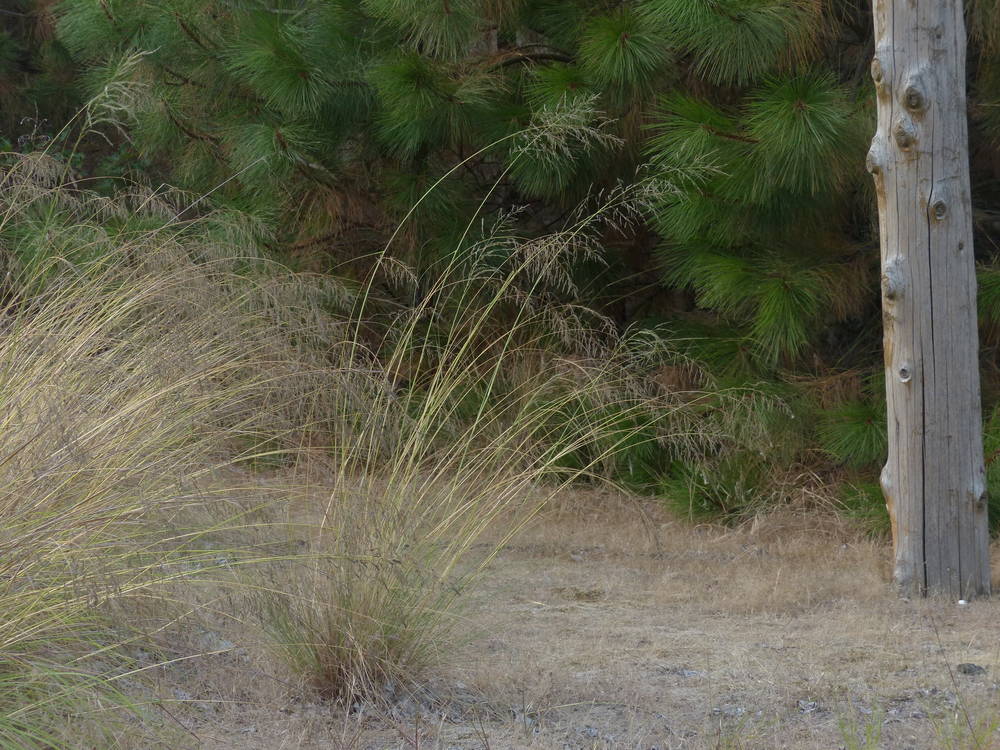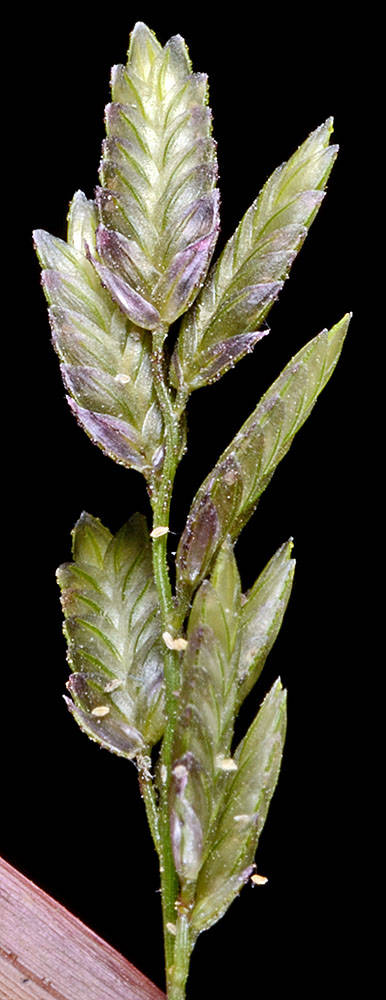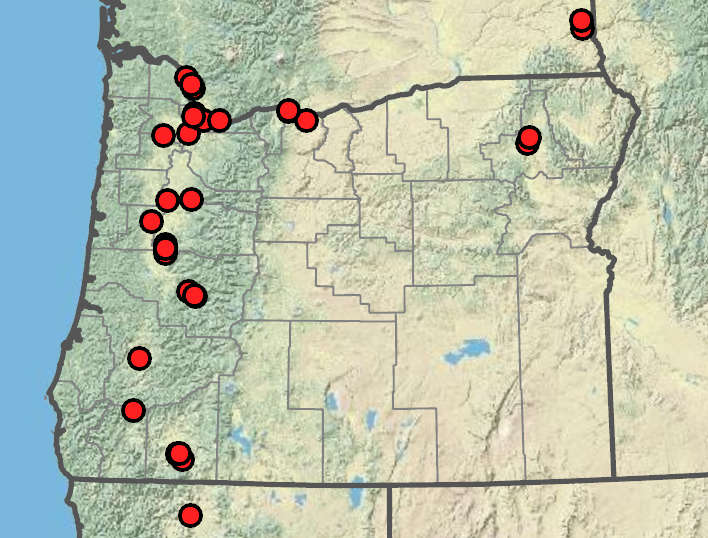Eragrostis curvula
Eragrostis
weeping lovegrass
lovegrass
erect, glabrous.
sometimes rooting at the lower nodes, sometimes branched above the base.
mostly basal;
sheaths with scattered hairs to 9 mm;
blades 12–50(65) cm × 1–3 mm.
sheaths open with tufts of hairs at the tops;
hairs 0.3–8 mm;
ligules usually membranous and ciliate; the cilia sometimes longer than the membranous base, occasionally consisting of hairs only or of non-ciliate membranes;
blades flat, folded, or involute.
16–35(40) × (4)8– 24 cm; ovate to oblong; open;
primary branches 3–14 cm, diverging 10–80° from the inflorescence axis;
pedicels 0.5–5 mm, appressed; flexible;
disarticulation irregular or acropetal;
basal rachilla internodes persistent.
terminal and sometimes axillary open to contracted panicles.
4–8.2(10) × 1.2–2 mm, gray to yellowish, with 3–10 florets.
laterally compressed; (1)2–60 florets, cleistogamous spikelets occasionally present on the axillary or terminal panicles;
disarticulation below the fertile florets; the glumes sometimes deciduous; the paleas sometimes persistent; acropetal or irregular.
lanceolate; hyaline;
lower glumes 1.2–2.6 mm;
upper glumes 2–3 mm.
2, usually shorter than the adjacent lemmas, 1(3)-veined;
tips obtuse to acute; awnless.
1–1.7 mm, ellipsoid to obovoid, dorsally compressed, with or without a shallow; broad groove.
brown, often translucent.
1.8–3 mm; ovate, membranous;
lateral veins conspicuous;
tips acute.
glabrous; (1)3(5)-veined, usually keeled;
tips obtuse to acute; awnless or mucronate.
1.8–3 mm; hyaline to membranous, obtuse.
2-keeled; the keels usually ciliate.
3, 0.6–1.2 mm; reddish brown.
2–3.
glabrous or sparsely pubescent.
=40, 60, 80.
Eragrostis curvula
Eragrostis
Roadsides, weedy meadows, disturbed areas. 0–900m. BW, Casc, Col, ECas, Sisk, WV. CA, WA; east across southern US to VA and FL, south to Mexico; southern Africa. Exotic.
Eragrostis curvula is a densely cespitose plant that produces a nodding panicle in late summer. It slightly resembles a fineleaved fescue.
Temperate, subtropical, and tropical regions worldwide. Approximately 350 species; 8 species treated in Flora.
Several of Oregon’s Eragrostis species have glands on the culms, leaves, inflorescences branches, or spikelets. The glands may be discolored patches, or they may be “saucer-like” with raised edges. The glands give some species characteristic odors.
Barbara Wilson, Richard Brainerd, Nick Otting
Barbara Wilson, Richard Brainerd, Nick Otting
- Local floras:
BC,
CA,
OR,
WA
- Local Web sites:
CalFlora,
CalPhotos,
Flora NW,
PNW Herbaria
WildflowerSearch
iNaturalist (observations)
USDA Plants Database
- LBJ Wildflower Center
- SEINet
- Plants of the World Online
- Encyclopedia of Life
- Wikipedia
- Google Image Search
- Local floras:
CA,
OR,
WA
- Local Web sites:
CalFlora,
CalPhotos,
Flora NW,
PNW Herbaria
WildflowerSearch
iNaturalist (observations)
USDA Plants Database
- LBJ Wildflower Center
- SEINet
- Plants of the World Online
- Encyclopedia of Life
- Wikipedia
- Google Image Search




